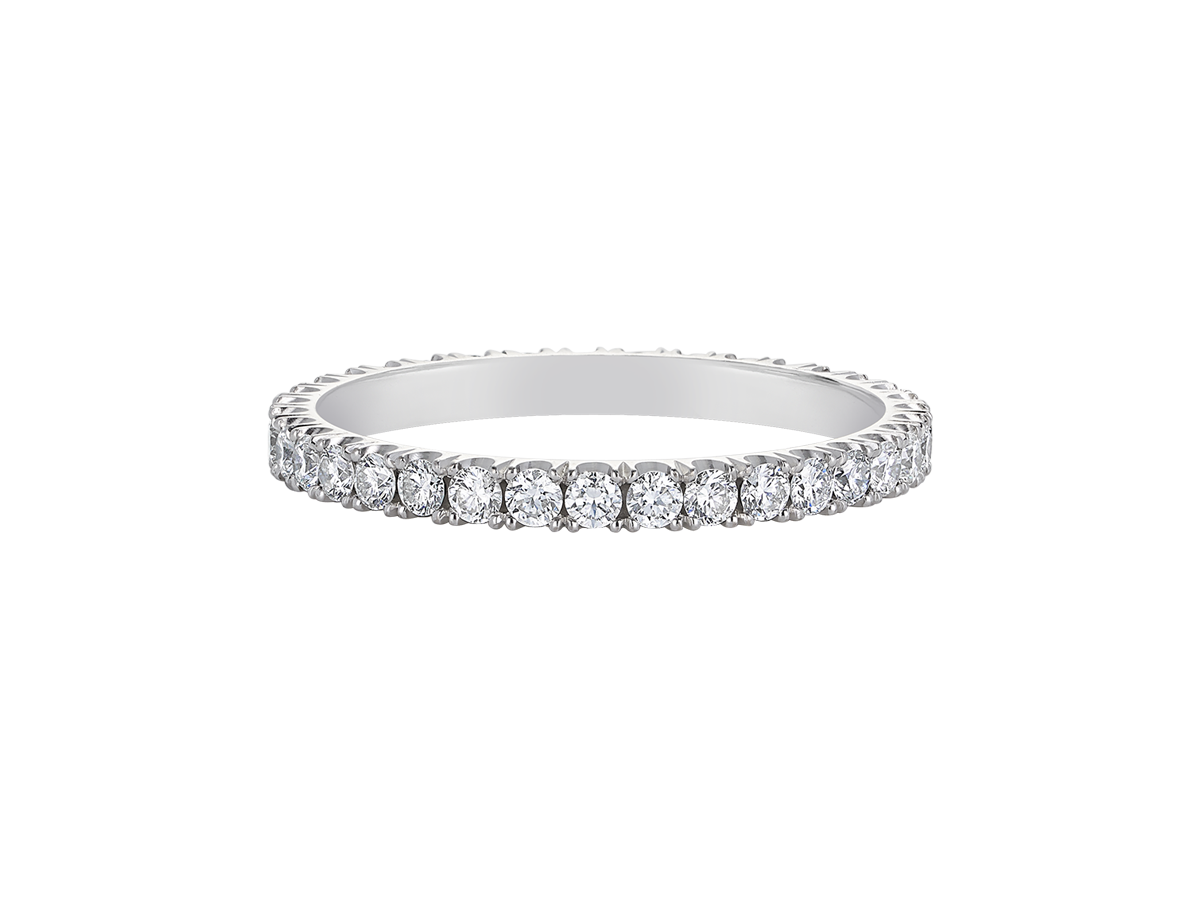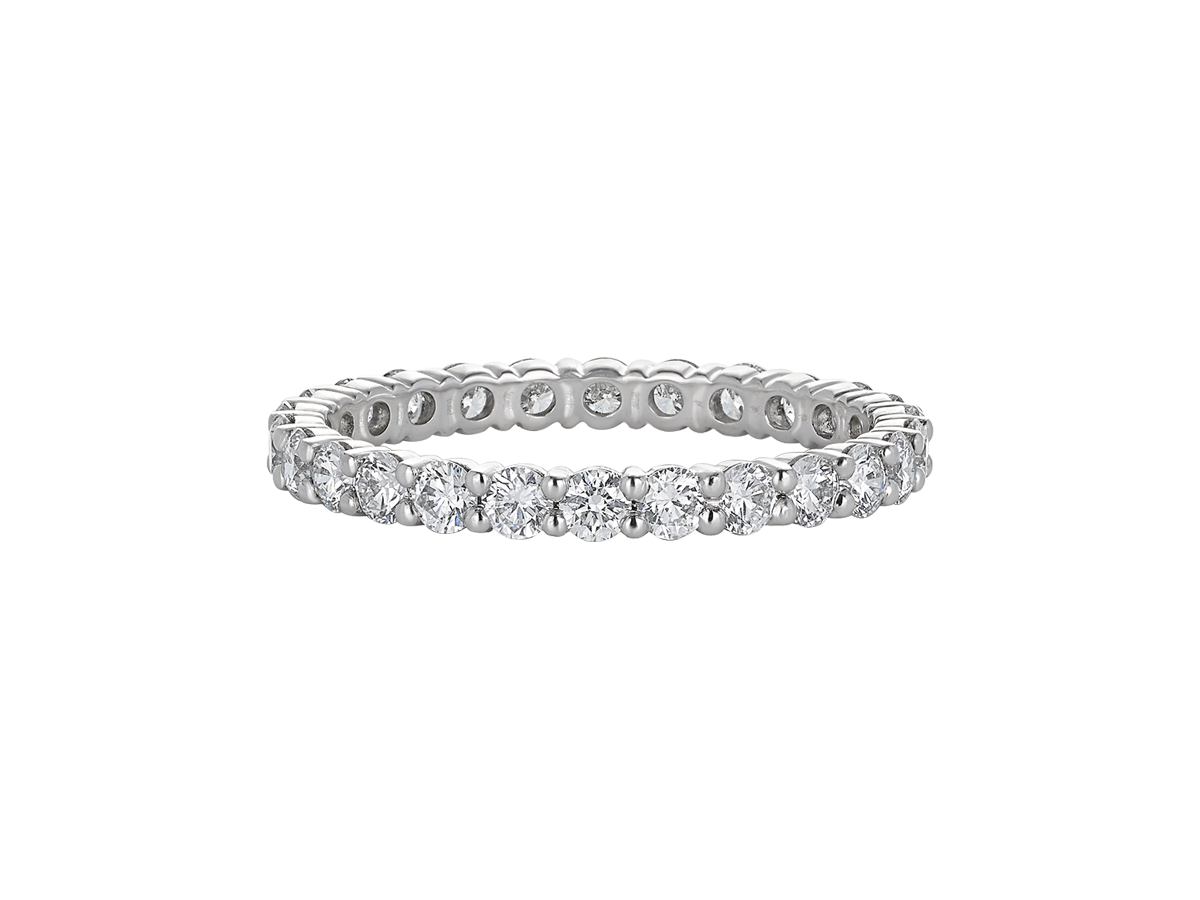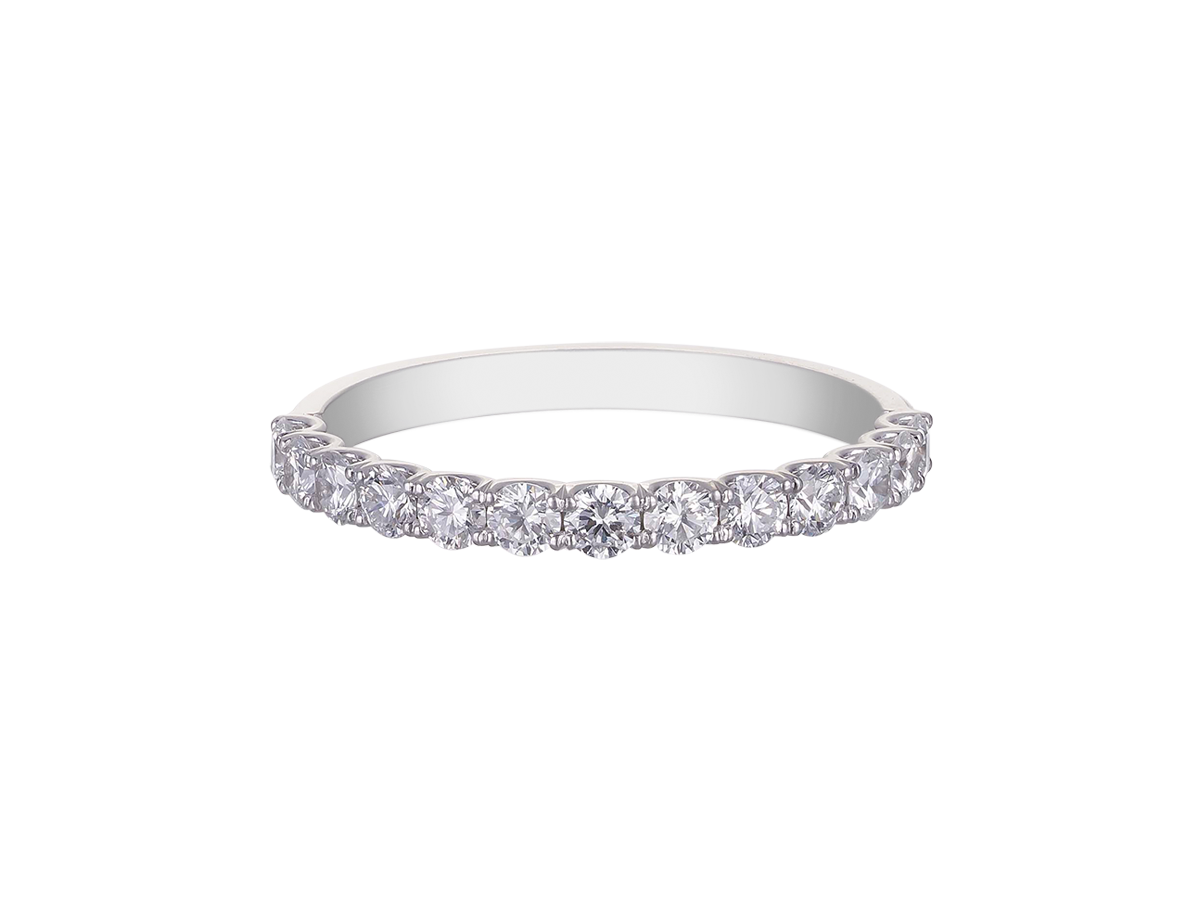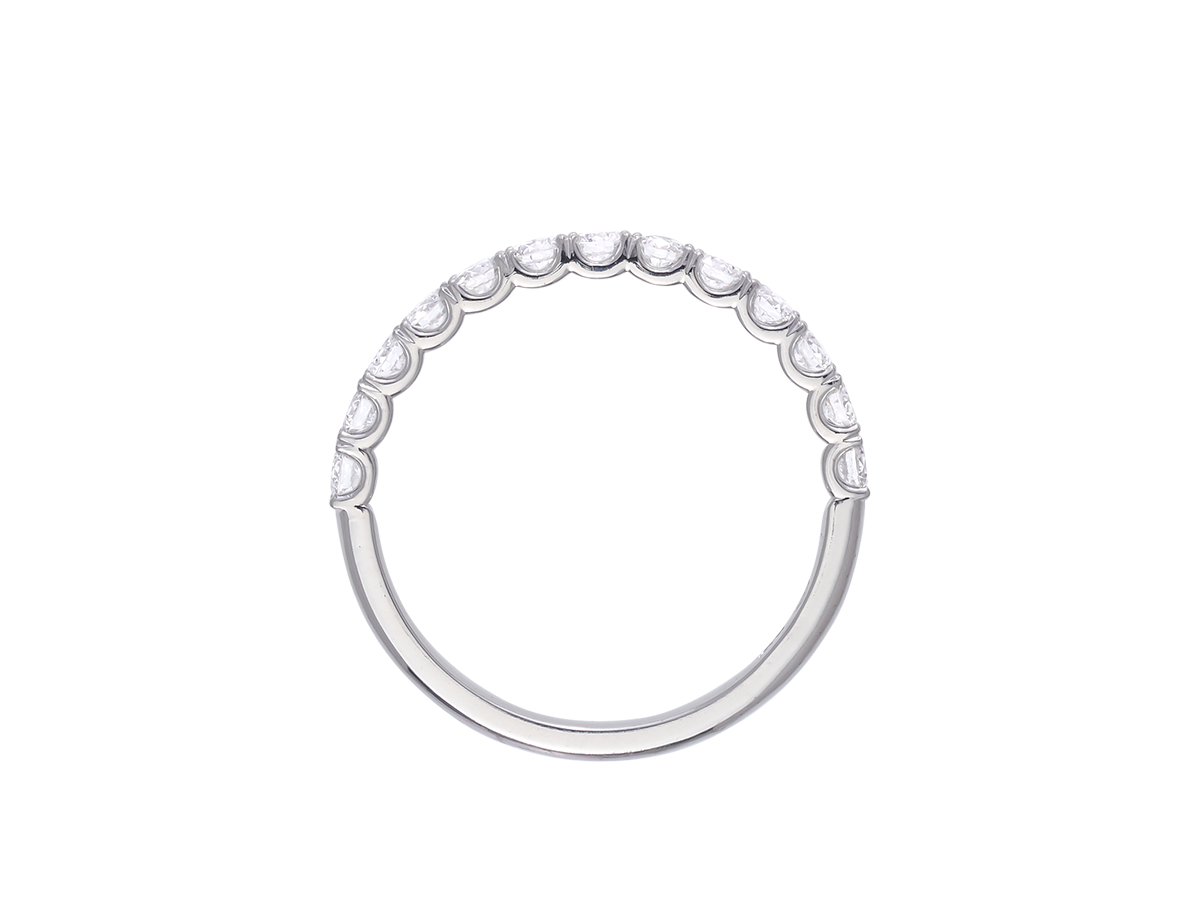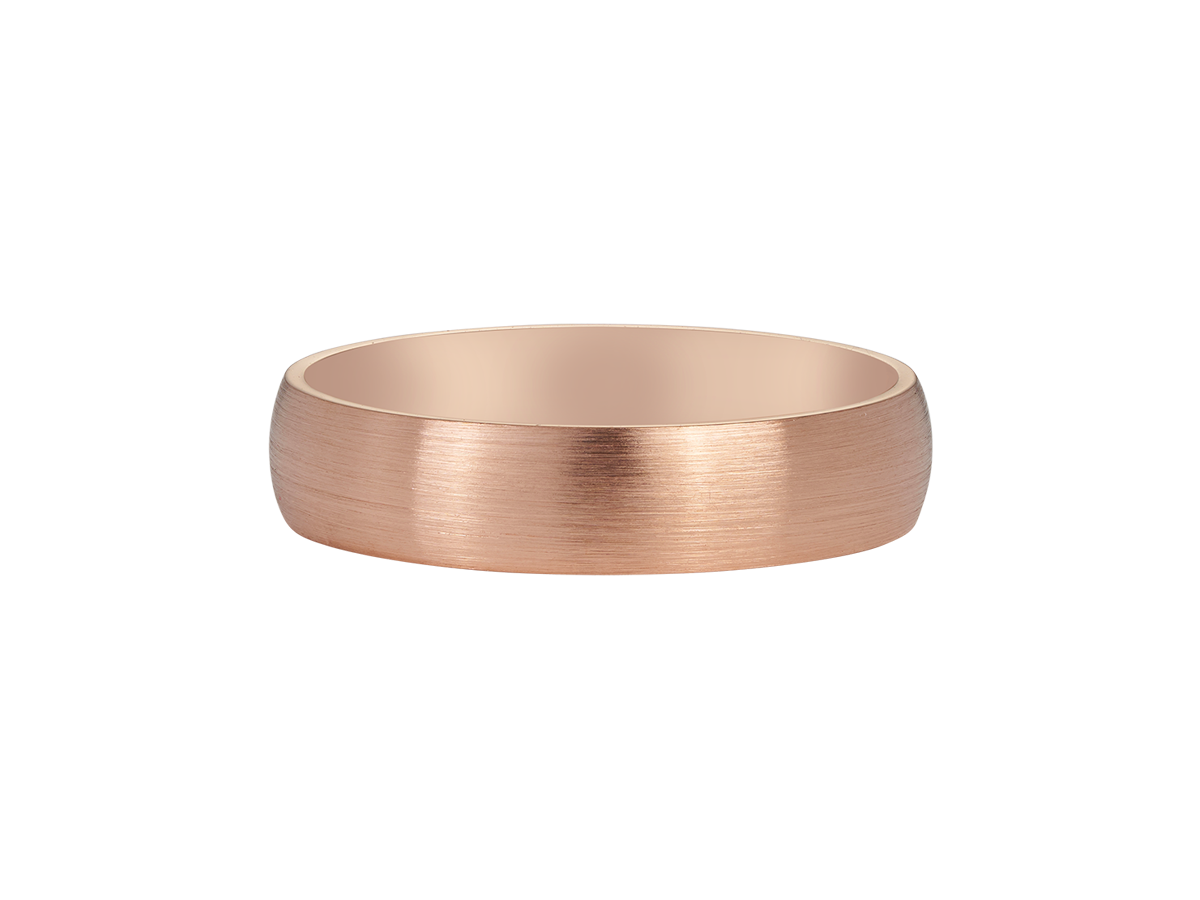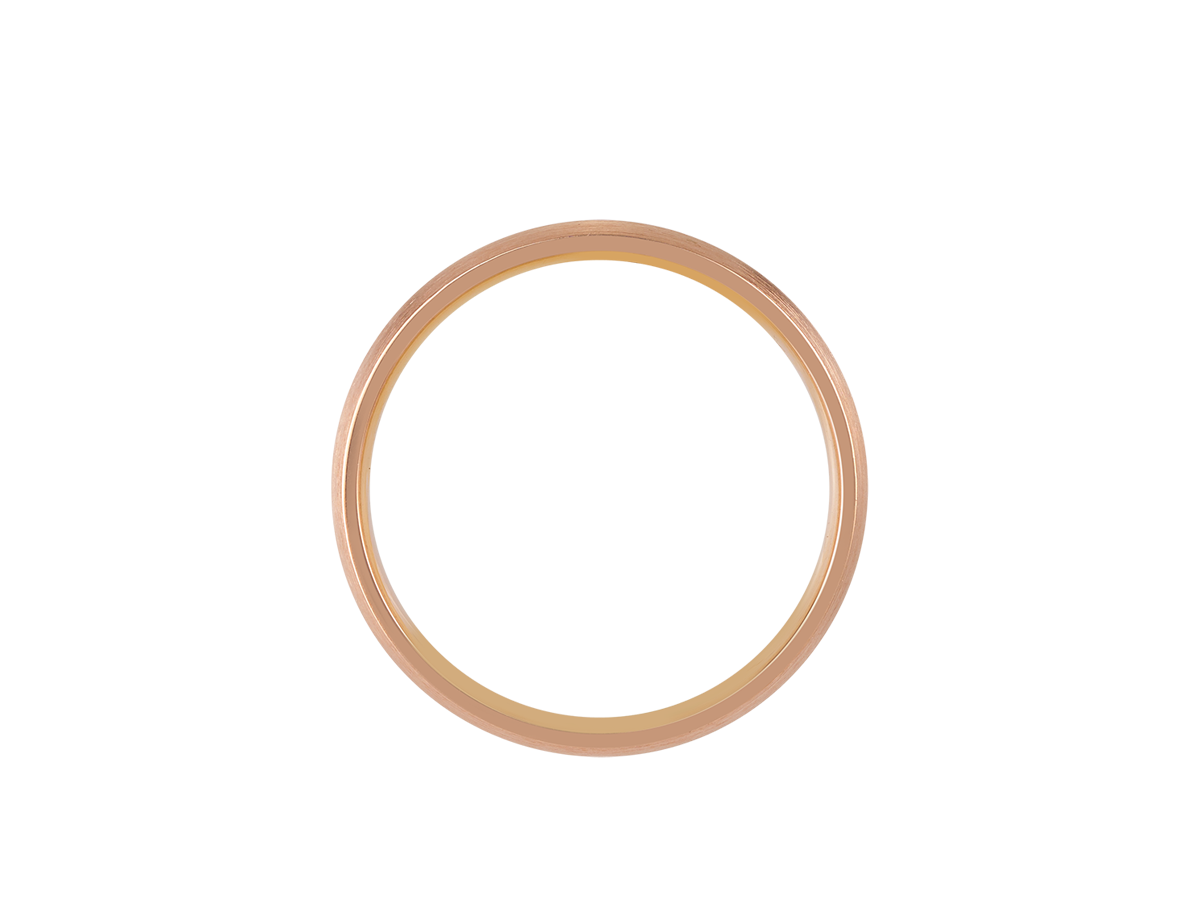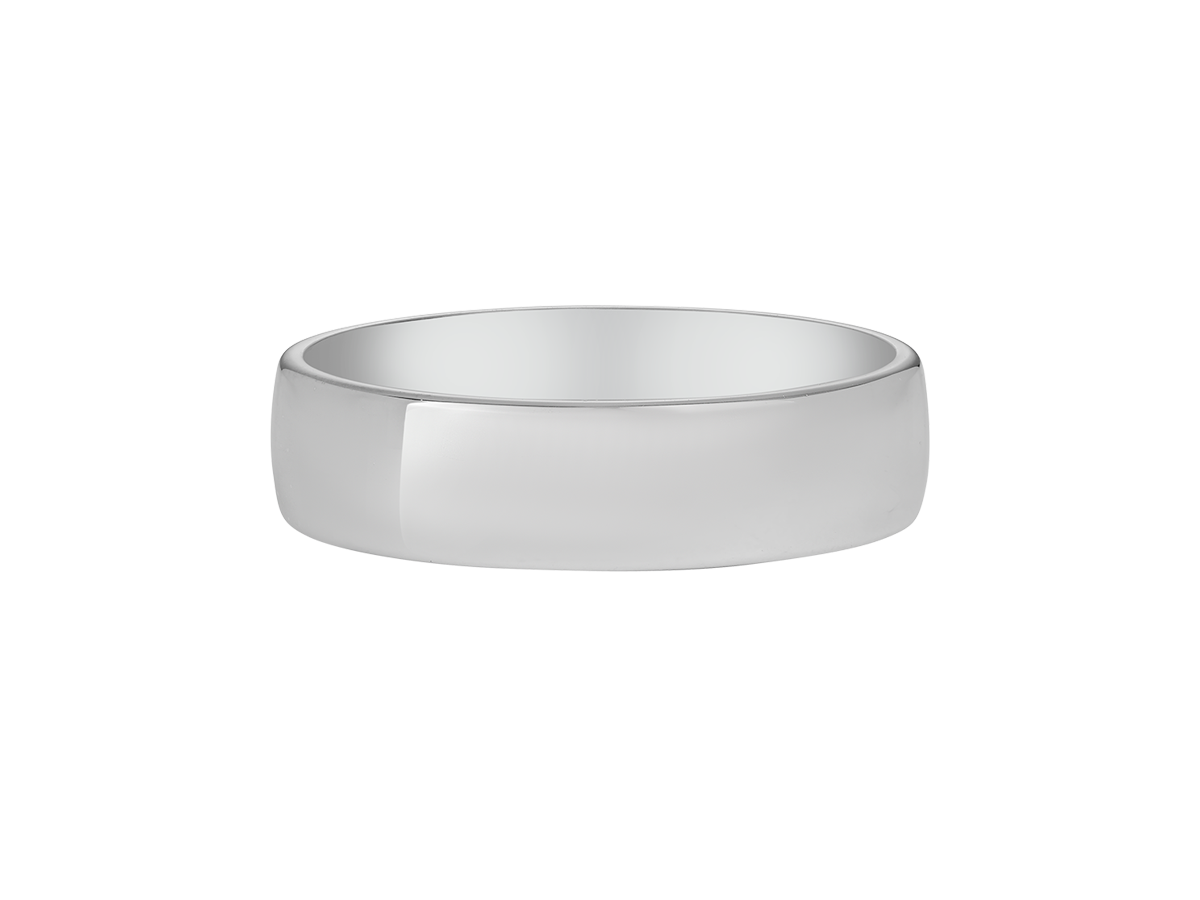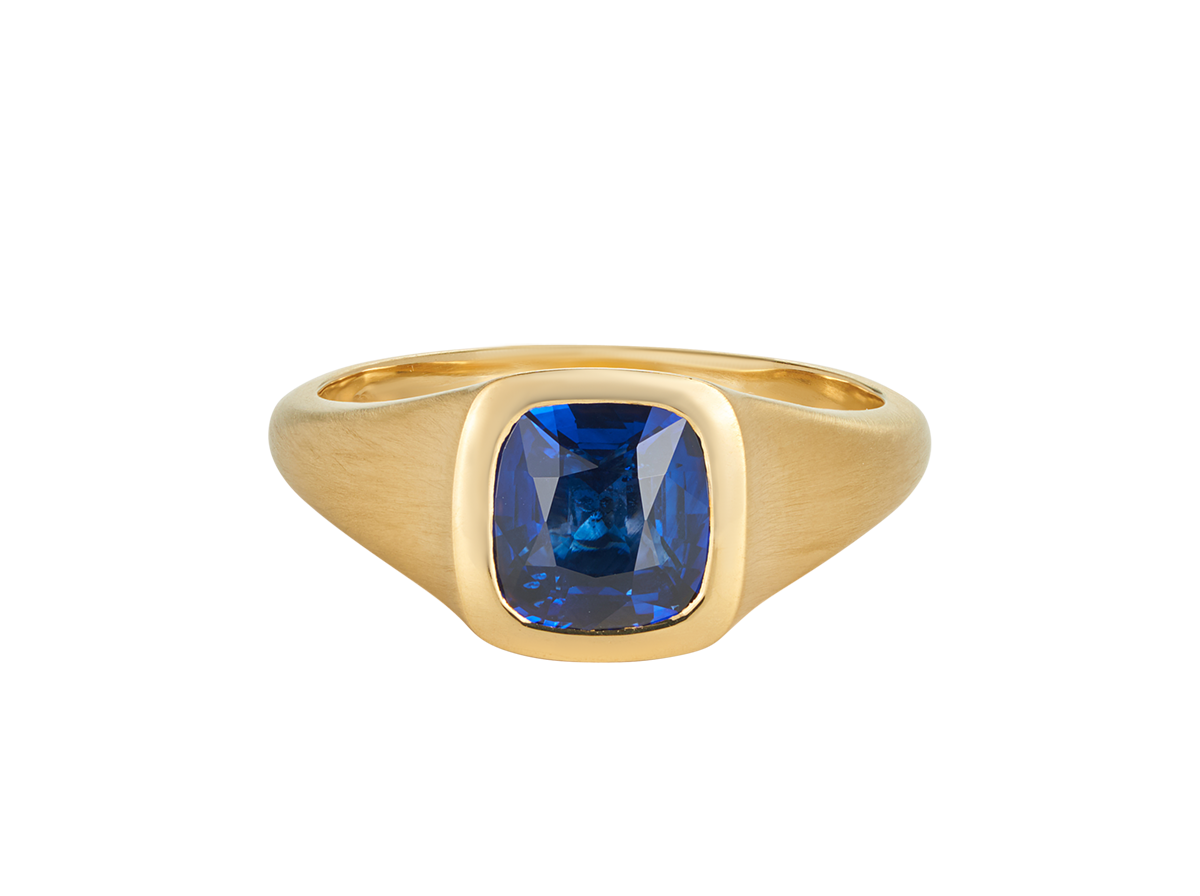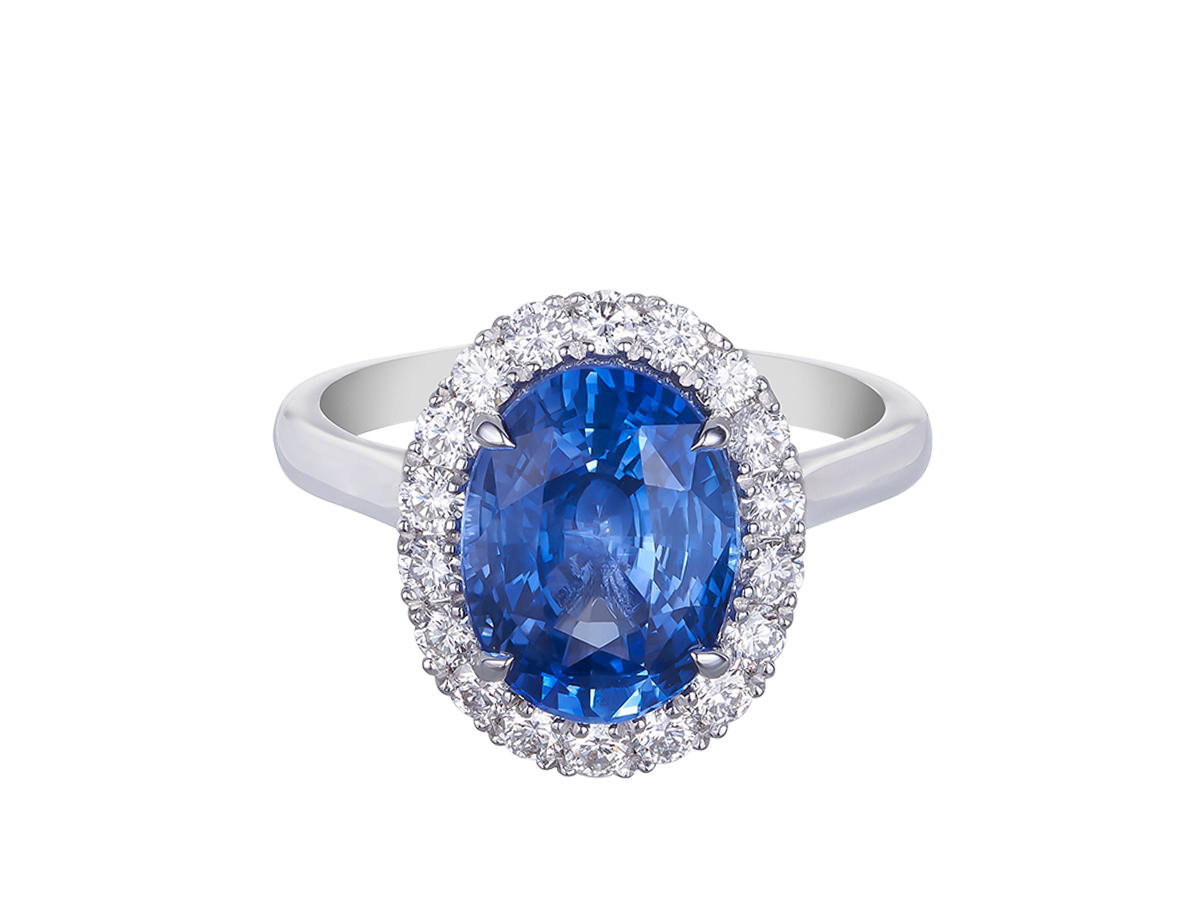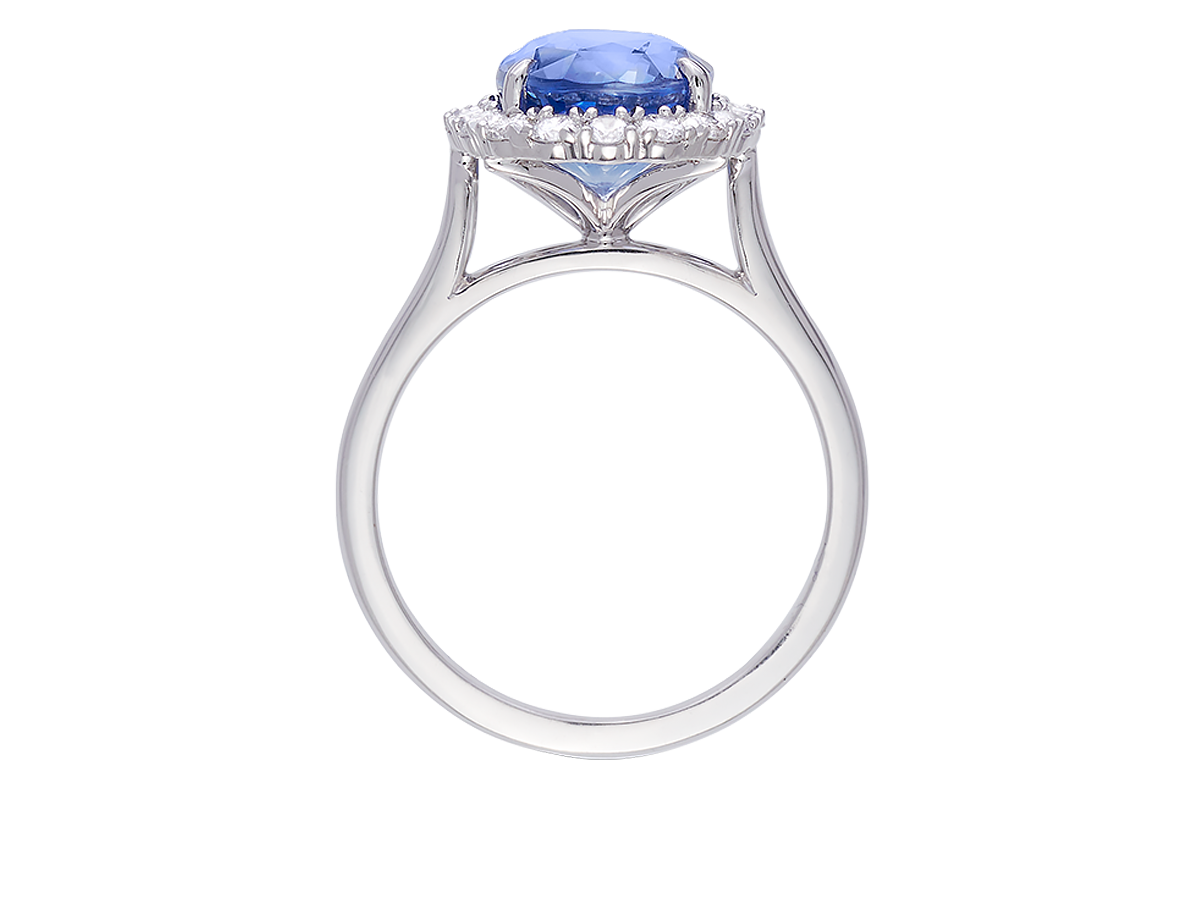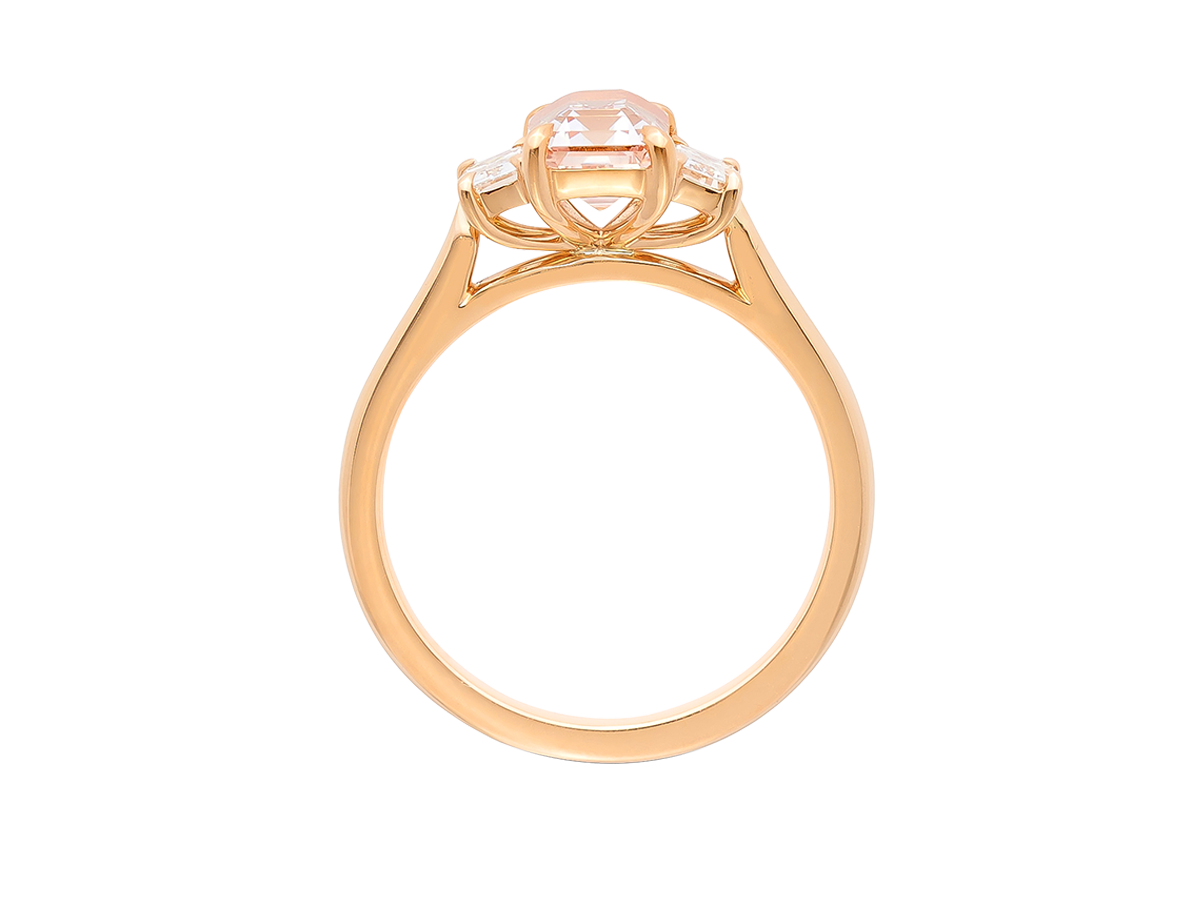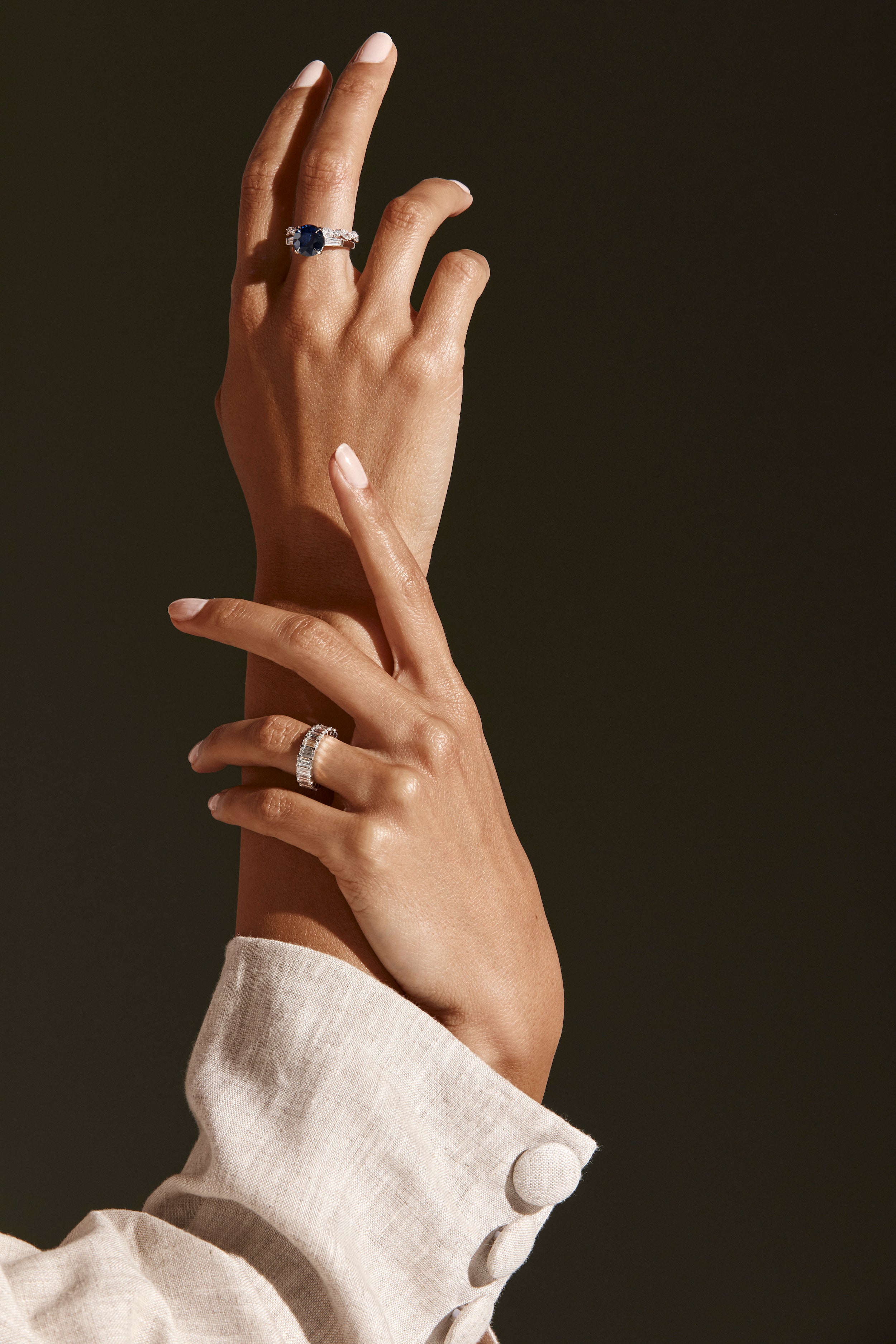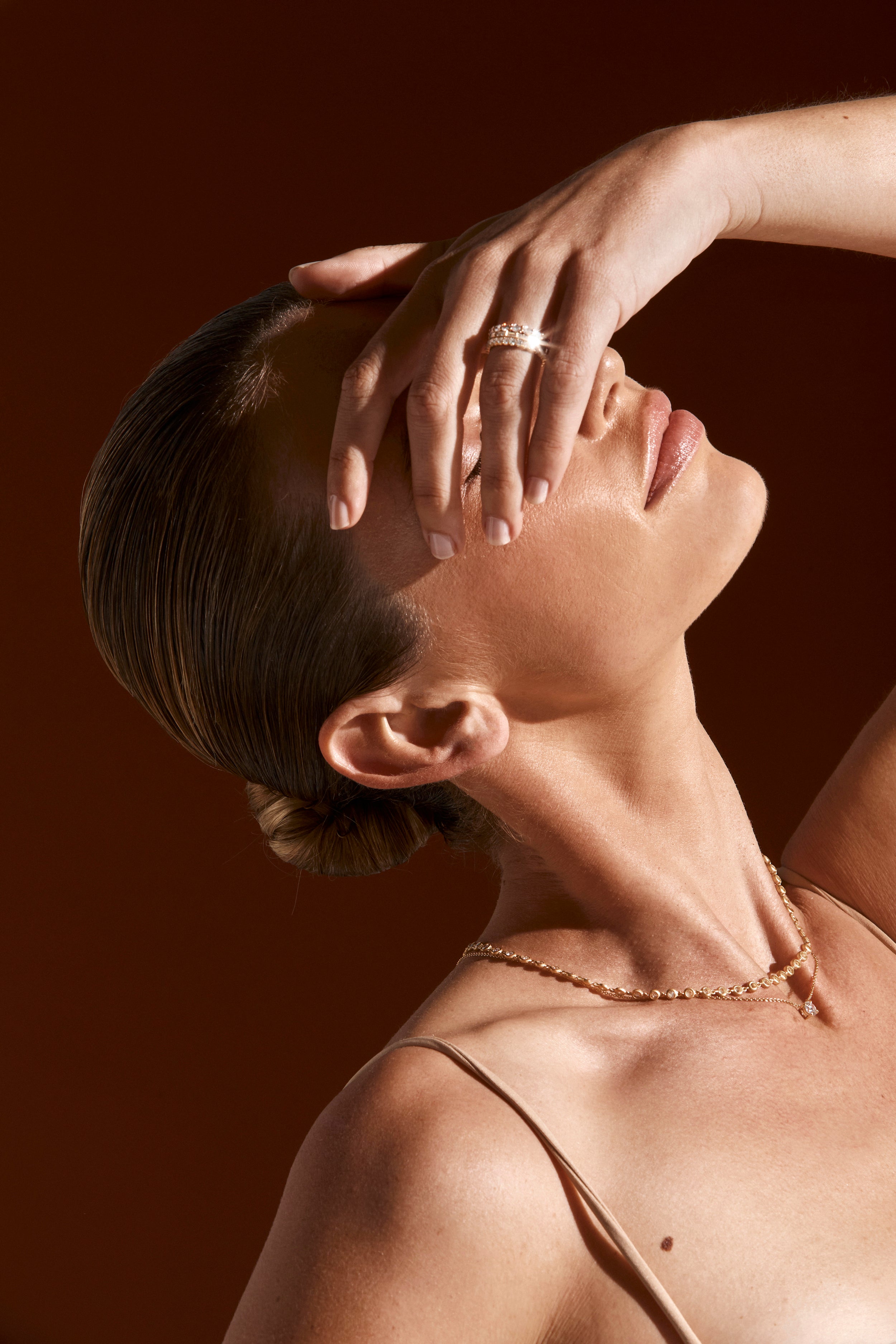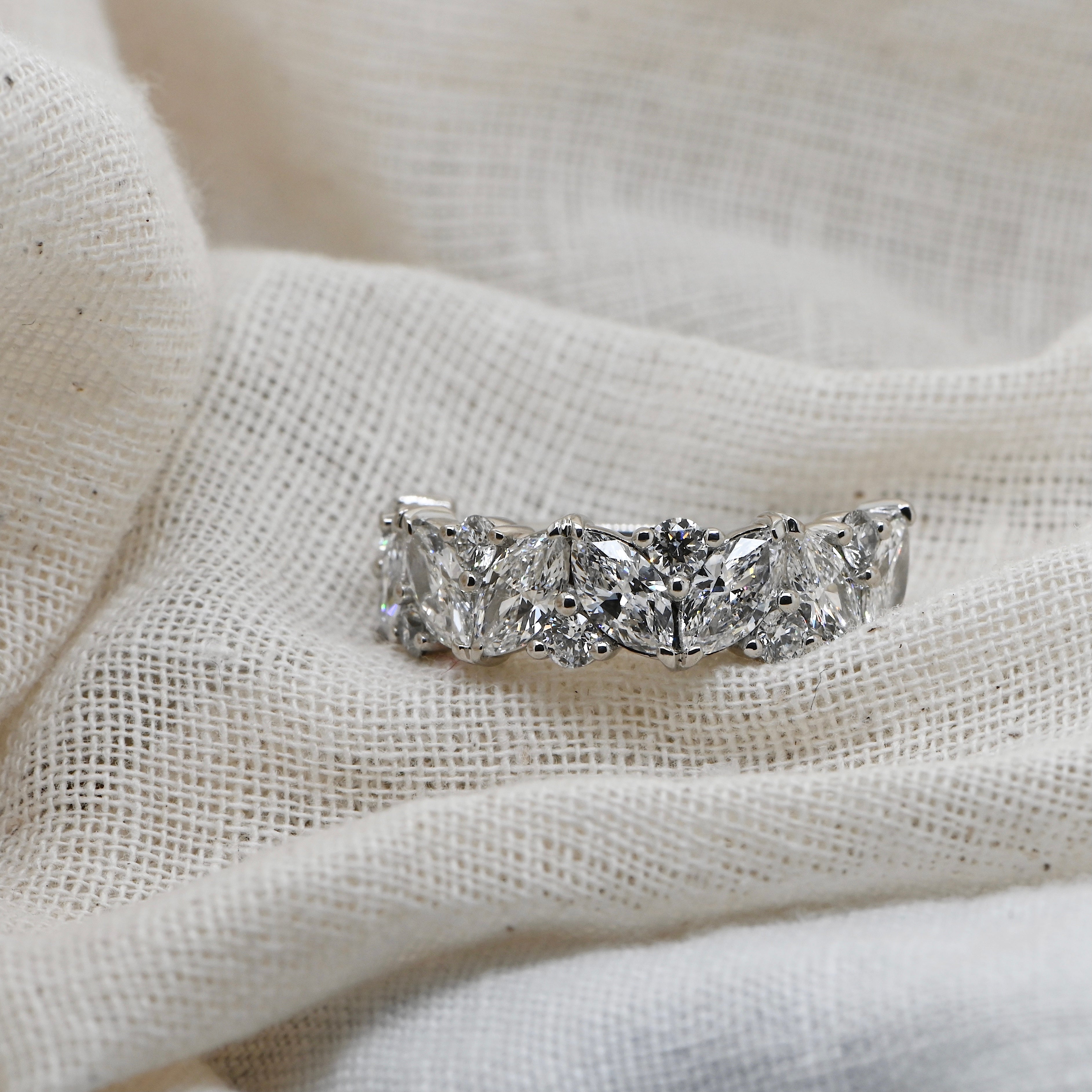We understand deciding which metal will suit you or your partner best can be a little overwhelming. Keep in mind, metal colour is all about personal preference and what you feel suits your skin tone best. We encourage you to view and try on the different options in our studio to help you decide on your preferred metal colour.
This guide includes detailed information regarding the various premium metals we use in the A.G workshop, their composition and their relative pros and cons from our experience, which may also assist you in your decision. All of the options are absolutely suitable for fine jewellery pieces. Of course, our A.G experts will also talk you through the options during your personal consultation and help you decide based on your preferences, other jewellery, and lifestyle factors.
A.G engagement rings and women’s wedding rings are crafted in either 18 carat gold (yellow gold, white gold, or rose gold) or platinum. A.G men’s wedding bands are usually made in either 9 carat or 18 carat gold (yellow gold, white gold, or rose gold), platinum, zirconium, or mokume / mokume-gane. It’s also possible to use a combination of metals. The surface of A.G rings can be given various finishes, such as brushed, hammered, or polished.
Yellow Gold
Yellow gold is a timeless option for any type of ring. In its natural form, gold is a soft, yellow coloured metal. You’ll hear gold discussed in terms of 24 parts or carats. For jewellery purposes, gold is always made into an alloy, meaning it is combined with other metals to establish strength and to achieve desired colour properties. For example, pure gold is too soft for prolonged wear and would scratch too easily.
At A.G Designer Jeweller, we use 18ct gold for our engagement rings and most wedding rings meaning the ratio of the alloy is 18 parts (of 24 parts) gold mixed with other metals. Some A.G men’s wedding rings are made in 9ct gold.
18ct yellow gold is made by mixing 75% pure gold with 25% other metals such as copper, zinc, and silver, whereas 9ct yellow gold is made by mixing 37.5% pure gold with a higher proportion of the other metals. As the carat value of pure gold drops, so does the intensity of the yellow colour, with 18ct gold being more yellow compared to 9ct gold given the higher component of pure gold.
The gold A.G works with does not include any nickel content which can be a skin irritant for some people, and is prevalent in cheaper, less premium golds.
Benefits
- The colour of yellow gold stays true over time.
- Yellow gold is a timeless metal choice for any jewellery piece and has been long- admired for its beauty and elegance.
Premium White Gold
In the same way that yellow gold rings aren’t made of pure yellow gold, white gold is made by combining gold (naturally yellow in colour) with alloying metals to achieve a bright white colour.
All A.G white gold rings use a premium nickel-free 18ct or 9ct white gold which includes palladium as an alloy. Given the pure gold content, 18ct white gold is a slight grey/off-white colour. At A.G, we rhodium plate our white gold rings to brighten the metal colour and to increase the lustre of the metal. Read more about rhodium plating here.
The gold A.G works with does not include any nickel content which can be a skin irritant for some people, and is prevalent in cheaper, less premium golds.
Given the similarity in colour, our clients who desire a white coloured metal choose between platinum and white gold. See more detailed information regarding the differences between white gold and platinum here.
Benefits
- White gold is inherently strong and offers finer details greater rigidity compared to platinum.
- When plated, white gold is a beautiful, crisp white colour which complements diamonds incredibly well.
Drawbacks
- White gold is more vulnerable to wearing away than platinum, and over time, the ring will become thinner with significant wear.
- White gold will develop an off-white colour over time. Rhodium plating will need to be re-applied through the life of a white gold piece (note this is complimentary for A.G clients, for life).
Rose Gold
Rose gold, also known as pink gold, is made of copper and yellow gold. The higher the copper content, the stronger the red colour, as pure gold is yellow and pure copper is reddish. 18ct rose gold is a beautiful rose colour, with 75% yellow gold content and 25% copper content.
A.G rose gold rings are made in 18ct or 9ct gold. The gold A.G works with does not include any nickel content which can be a skin irritant for some people, and is prevalent in cheaper, less premium golds.
Benefits
- The colour of rose gold stays true over time.
Drawbacks
- Rose gold isn’t considered hypoallergenic because of the copper presence, so please be mindful if you have particularly sensitive skin.
Platinum
Being a naturally white metal, platinum is a popular choice for engagement rings and wedding rings at A.G.
Platinum is a dense, heavy, and relatively rare metal. Unlike white gold, platinum is used in jewellery in almost its pure form; A.G platinum is approximately 95% pure and 5% alloy metal.
Given platinum weighs around 30% more than gold, platinum rings are noticeably heavier than 18ct white gold rings which some consider a benefit and others consider a drawback.
Benefits
- Platinum is the most durable metal option for fine jewellery, and a great option for people with a hands-on occupation or lifestyle. Platinum is resistant to wearing away, meaning a platinum ring will barely lose any of its metal thickness over time.
- The metal is naturally white and doesn’t require plating, like white gold does.
- It’s a rarer metal than gold.
Drawbacks
- Platinum can bend and shows dents more easily than white gold.
- Platinum requires more care than white gold in terms of regular cleaning and polishing to retain its smooth, bright qualities given it’s more prone to developing a dull appearance with wear.
- Recommend only wearing against another platinum ring so it doesn’t slowly wear against another metal.
See more detailed information regarding the differences between white gold and platinum here.
Zirconium
Zirconium is rising in popularity, particularly for men’s wedding bands. It’s an excellent metal for someone who is after something out of the ordinary. Recently zirconium rings with a gold inside sleeve have been popular at A.G, meaning the ring has a black zirconium outside and a contrasting gold inside sleeve.
Zirconium is a natural element which needs to go through an extraction, heating, and oxidation process to gain its rich black colour. The black colour of zirconium won’t fade, tarnish, or change colour.
Benefits
- Zirconium is a strong and durable metal.
- Rings made of zirconium are very easy to clean and require no replating or polishing as the black colour is permanent.
Drawbacks
- Zirconium rings cannot be re-sized.
Mokume
Mokume or mokume-gane (pronounced Moe-cue-may Gah-nay) is an ancient Japanese metalworking technique developed by master swordsmiths. Layers of two different coloured precious metals are alloyed together and worked with heat and pressure, then twisted, carved, and forged together to create striking organic patterns. Eventually a pattern resembling wood grain emerges in the metal. The process creates distinctive patterns each time ensuring you have a ring that is truly like no other.
Mokume is a perfect choice for those seeking a unique wedding band. A.G is proud to have a mokume jeweller as part of our team.
Rings made using this mokume technique are a brilliant symbol of marriage—two different elements permanently bonded together as one.
Benefits
- Unique, one-off designs.
Drawbacks
- Labour intensive and therefore more expensive than other A.G wedding bands.






























